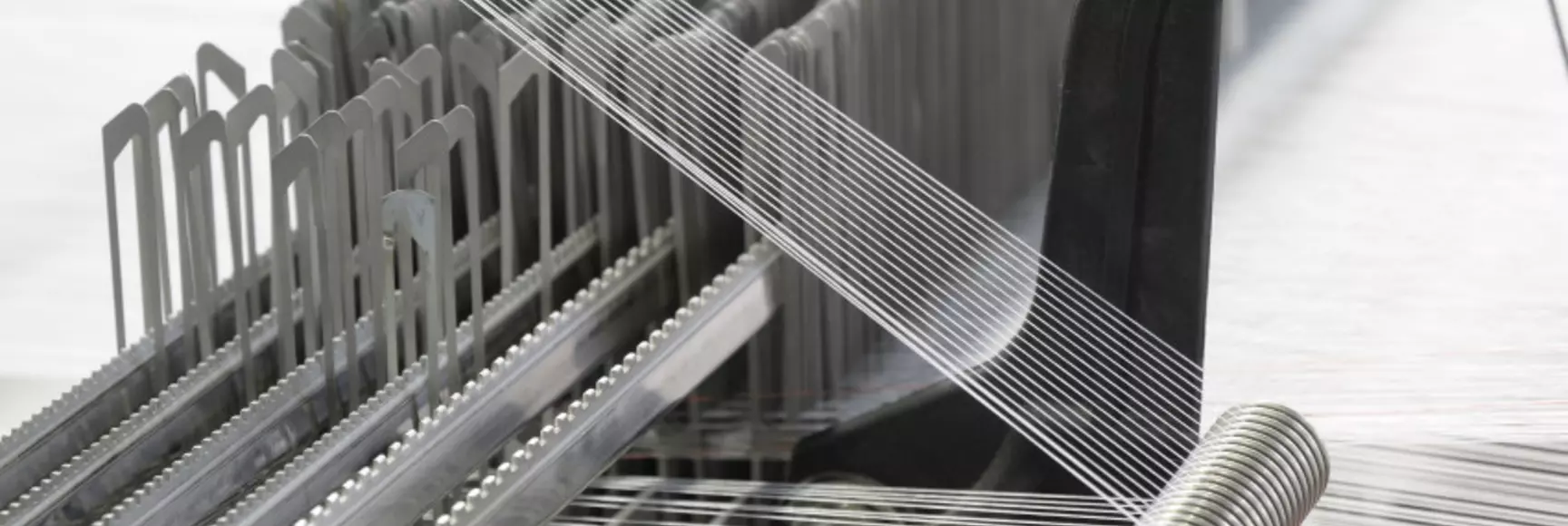Customer spotlight: Payen
Founded in 1839 as a business producing silk yarn products, The Payen Group has developed along with its market. The company has worked in partnership with LYCRA® fiber since its launch, when it specialized in producing covered synthetic yarn followed by two-way stretch woven fabrics.
Oct 15, 2019

Manufacturing equipment at The Payen Group. The firm has used LYCRA® fiber since its launch to produce quality textiles.
Learn about The Payen Group
Founded in 1839 as a business producing silk yarn products, The Payen Group has developed along with its market. The company has worked in partnership with LYCRA® fiber since its launch, when it specialized in producing covered synthetic yarn followed by two-way stretch woven fabrics. Today, Payen has made a name for itself at the high end of the market, and its products have been used in competitive sports at the highest level for the last 20 years. Bernard de Buhren, the company's chairman, gives us an insider’s account of a group that has the resources it needs to stay ahead of the game.
Could you give us a quick description of The Payen Group and what makes it special?
Our activities can be broken down into two complementary domains: the production of elasticated covered yarn, and the manufacture of two-way stretch woven fabrics with high elongation (60% minimum). In both cases, we have opted to concentrate our efforts on high-performance synthetic raw materials such as LYCRA® fiber, polyester and polyamide.
Why did you decide to limit yourselves to such specific products within each of your domains?
We don’t want to spread ourselves too thin by working on a wide range of materials and products; instead, we want to focus on what has been our core business for many years. This helps us to be particularly effective at leading the way. I would like to add that there is an industrial imperative to only use synthetic materials (so that there is no risk of contamination by the filaments spreading from one fiber to another). This could cause production problems when used in the machines of our clients. In addition, we systematically test all our new covered yarns by weaving them ourselves before presenting them to our clients. In this way, we make sure that they comply with the industrial requirements in every way.
On 1 January 2016, Payen took over ESF, which was already part of the same group. What was the objective of this merger? How has this changed things on a daily basis?
This takeover of ESF by Payen changes nothing for our clients. Internally however, it helps us run our operations more efficiently. ESF was founded in the late 80s to pursue a new and very different activity: the production of two-way stretch woven fabrics using Payen's covered yarns. We chose to assign this new business to a new company to avoid disrupting our customer base and creating any confusion. Since then, ESF has become a recognized player in the market, whose specific features are known by our clients. Moreover, the name of the company has not been lost as it is used as a brand within Payen despite its takeover by the latter.

Close-up of manufacturing equipment at Payen. The company produces covered synthetic yarns and stretch woven fabrics.
What are the main markets in which you operate?
At the outset, Payen's growth was largely associated with the tights (hosiery) market. In fact, fashion tights still represent 20 to 25% of our sales in covered yarns. However, we now supply a large majority of the European textile manufacturers, who appreciate our expertise and our ability to deliver covered yarns on a warped chain (which means that the chain is guaranteed as well as the yarn). As for our two-way stretch fabrics made with LYCRA® fiber, we started by supplying lingerie and swimwear manufacturers. We then began shifting our attention to more technical markets such as high-performance sports (swimming, biking, running), which now represent a significant portion of our business.
What types of fabrics do you develop specifically for sport? And what are their benefits?
We have developed a full range of muscle compression fabrics containing a substantial percentage of LYCRA® fiber (30 to 50%). Although the clothing offered on the sports market is largely dominated by knit fabrics, wovens also have many benefits, including their low weight. Woven fabrics are about 35% lighter than a knit fabric of equivalent opacity when dry. Indeed, this weight difference increases significantly when the fabric is wet. What's more, there is a misconception that knits are naturally more flexible. The truth is that they can only be stretched in one direction at a time, while our two-way stretch woven fabrics can be stretched in both directions at the same time. This makes them very comfortable and they feel like a second skin when worn. Finally, all our fabrics are made from yarns covered with LYCRA® fiber, which makes them more resistant to abrasion, and more durable.
What are the latest innovations in which you have used LYCRA® fiber?
In addition to our long-standing partnership with LYCRA® fiber, we develop all our innovations in collaboration with The LYCRA Company. Our patented Pagastic 4 yarn covering technology has become an industry standard thanks to its capacity to make very sheer and transparent 3D tights. More recently, our range of enhanced muscle compression products, Pagastrong, has achieved great success. We select a LYCRA® fiber with a high thread count to achieve a woven fabric that provides very good support, while being very lightweight (3 to 4 times lighter than the standard market offer). This fabric is ideal for creating comfortable, supportive and imperceptible shapewear. Finally, we just launched an entire range of polyamide threads and LYCRA® fiber, which can be thermo-set for use in very sheer and matt voiles. This is currently a very strong trend in the tights market.

A Payen mill. Based in St. Julien en St. Alban, France, the firm is a leader in the European synthetic textiles industry.
You launched a new generation sports fabric at the latest ISPO show. Can you tell us more about it?
Indeed, we have introduced two brand new innovative two-way stretch fabrics that are composed of a combination a LYCRA® fiber, a polyamide fiber, and 40 to 50% merino wool. We wanted to offer a fabric that is specially designed for the winter season without resorting to thermo-fusing two fabrics together like so many of our competitors. For the time being, this woven fabric is available in two versions (150 and 250 g/m2). It has many applications, including apparel for winter skiing, running and cycling.
What about connected clothing?
We want to enter the market with a range of "smart fabrics," which is still under development, and will use sensors to transmit information on breathing, heart rate, etc. To optimize the quality of the information gathered, we have added a high percentage of LYCRA® fiber to the fabric to keep it in constant contact with the skin and to avoid any interruption in the flow of data.
What are your flagship markets around the world, and what are their needs?
Most of our sales are achieved through exports, which account for 85% of our turnover. Regarding the yarn business, we work a lot with Europe. In contrast, the sales of our two-way stretch fabrics are more evenly balanced between Europe and the overseas markets (Korea, Japan and China, in particular). Another important market for us is the U.S., which is harder to penetrate, but offers further development opportunities.
What are your long-term objectives and growth drivers to achieve them?
We rely heavily on our weaving industry, which has been recording double-digit growth for the last four years and, once again, recorded a 20% increase in 2016. More than ever, we are convinced that this growth is based on the following three complementary and fundamental criteria: innovation, the ability to react quickly, and quality products. We will continue to focus on these criteria going forward. The sales of covered yarns and two-way stretch fabrics should be balanced within the next three years. They currently represent 60% and 40% respectively of Payen's sales; however, we believe that this trend will be reversed in favor of our weaving business.
All photos courtesy of The Payen Group
LYCRA® fiber is a trademark of The LYCRA Company.
Contacts
-
The Payen Group
Bernard de Buhren
Chairman - France
-
The LYCRA Company
Marc Souto
Technical sales representative - Spain, Italy, Portugal, France & Belgium - Spain